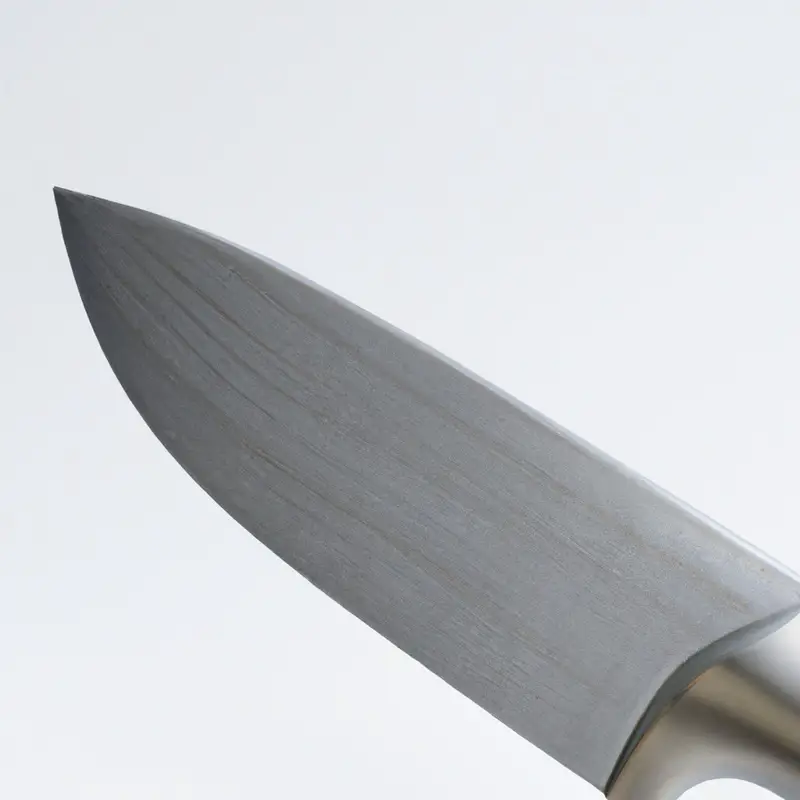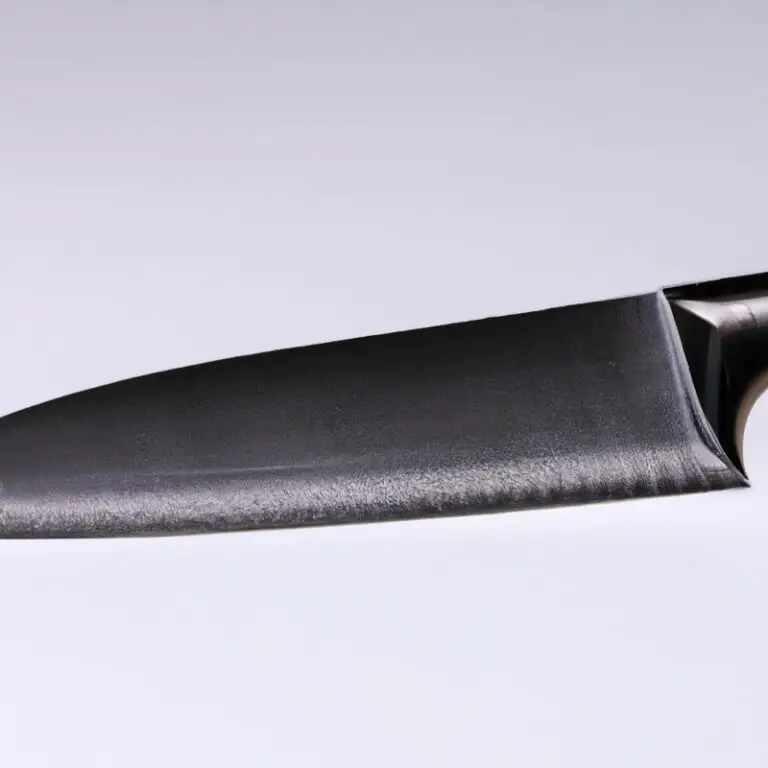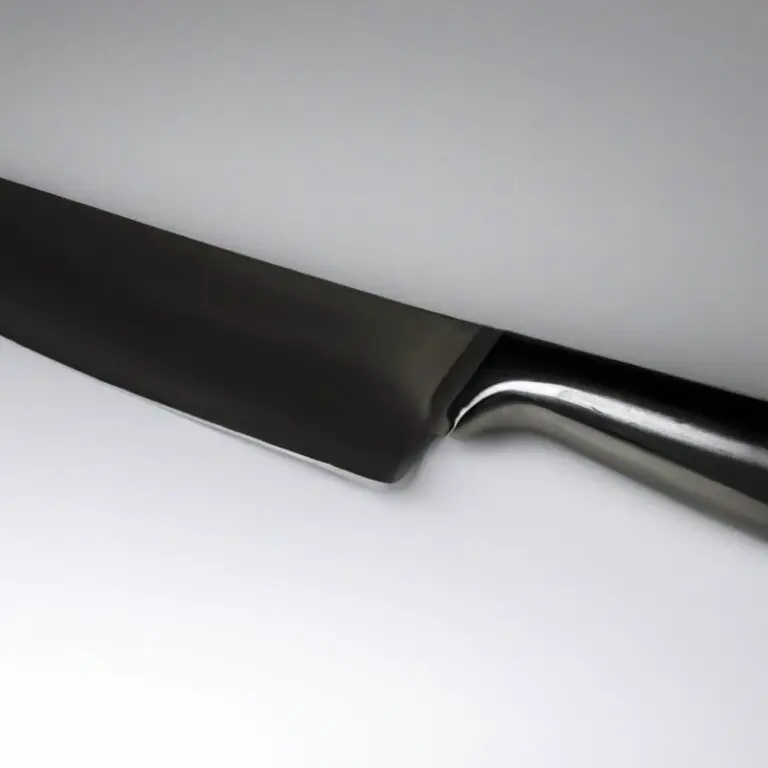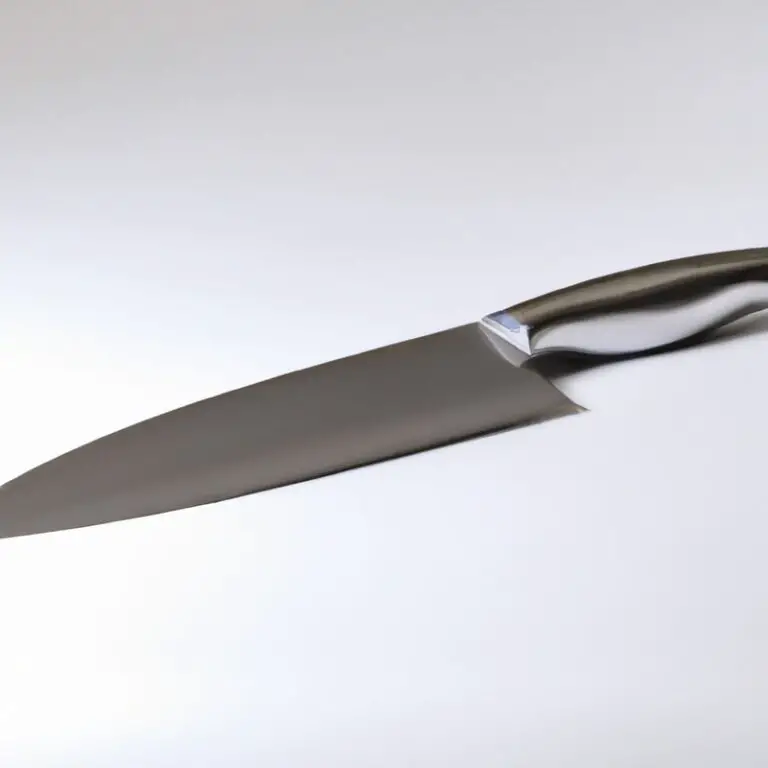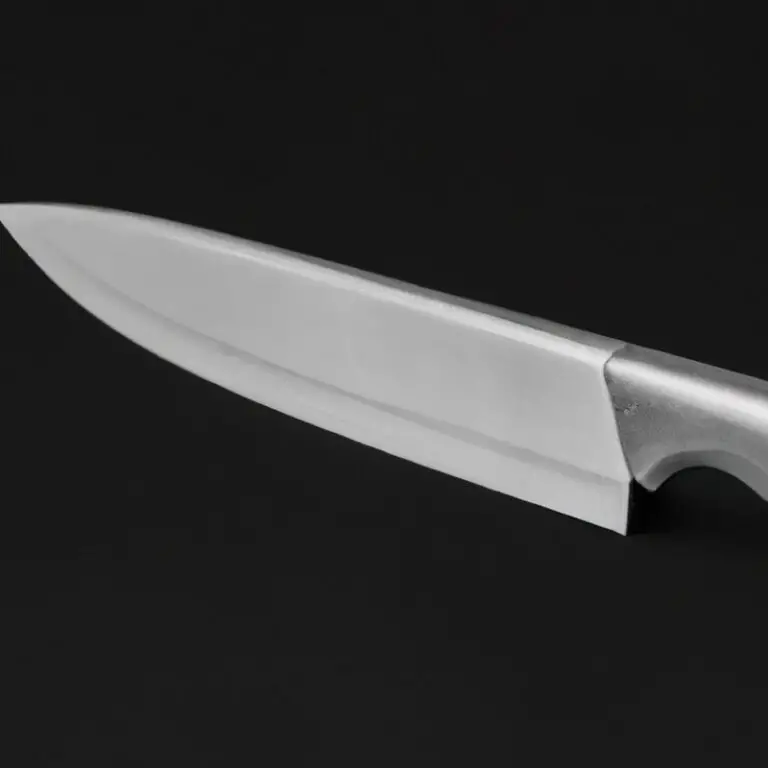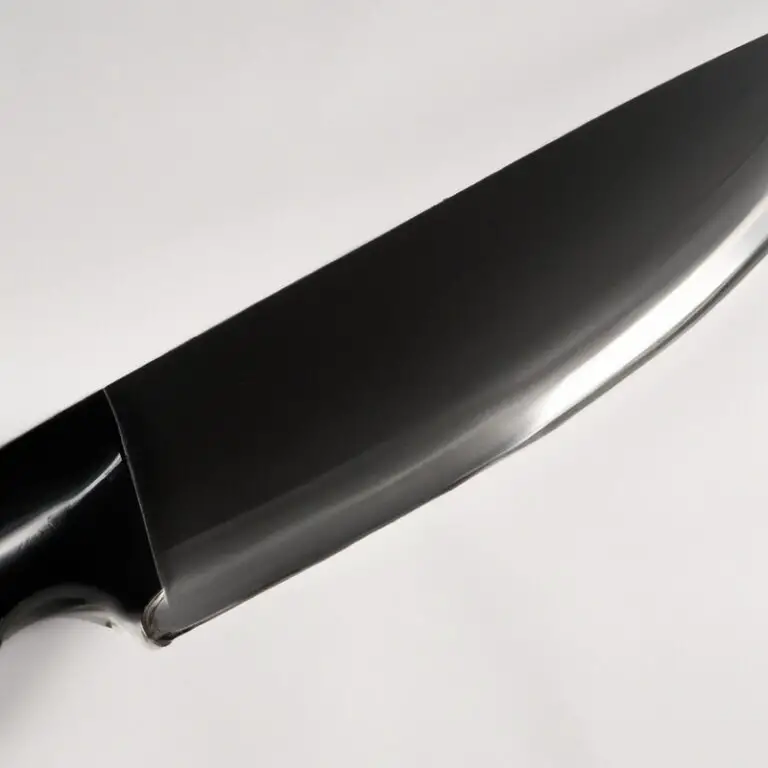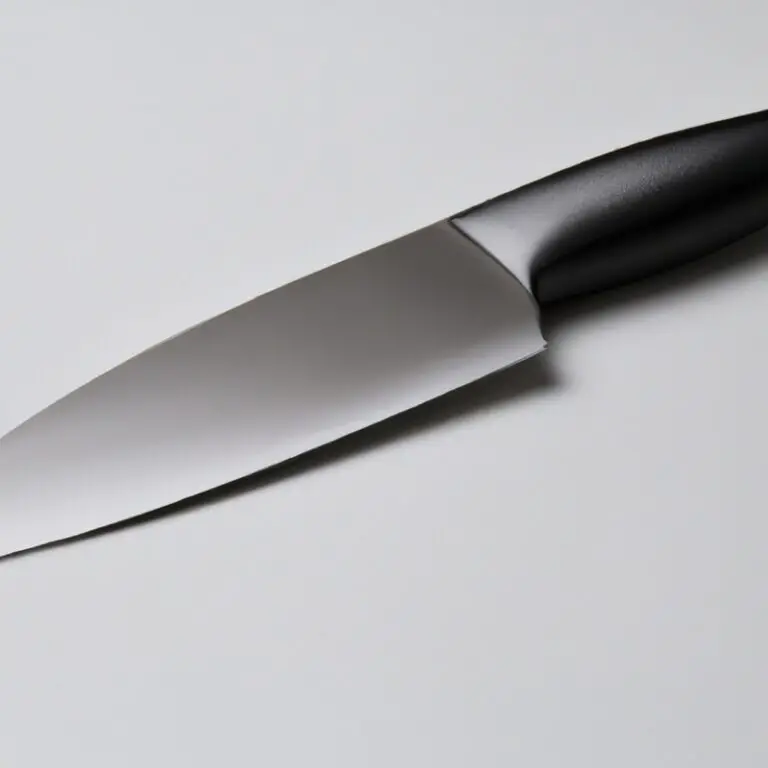Can You Use a Santoku Knife For Carving? – Explained
Key Takeaways:
- Santoku knives are not the most ideal tool for carving meat due to their unique design and intended use for slicing and chopping.
- While some may find Santoku knives effective for light carving tasks, they lack the length and stiffness necessary for larger cuts of meat.
- For more precise carving, it is recommended to use a thinner and longer blade such as a carving knife or a chef’s knife.
- Ultimately, the decision to use a Santoku knife for carving is up to personal preference and the specific task at hand, but it is important to consider the limitations and potential risks.
Have you ever wondered whether you can use a Santoku knife for carving? As a cooking enthusiast who loves preparing food with ease, this question might have crossed your mind.
Well, the good news is that the Santoku knife has been gaining popularity, and for a good reason.
In this article, I’ll help you understand the origin, design, and purpose of the Santoku knife, and determine whether it’s suitable for your carving needs. Join me as we explore tips and tricks for efficient and precise carving, and how to take care of this versatile knife to prolong its lifetime.
Let’s dive in!
| Knife Type | Carving? |
|---|---|
| Chef’s Knife | No |
| Santoku Knife | Yes, but not ideal |
| Carving Knife | Best option |
Understanding the Santoku Knife: Origin, Design and Purpose
The Santoku knife has its origins in Japan and has a unique design that sets it apart from other knives. It has a shorter length than a typical chef’s knife, with a wider blade and less curvature.
The name Santoku translates to “three virtues,” referring to its versatility in handling fish, meat, and vegetables.
The design of the Santoku knife makes it ideal for tasks such as slicing, dicing, and chopping. Its flat blade also makes it suitable for push cuts as opposed to rocking cuts, which are more common with Western-style knives.
Overall, the Santoku knife is a popular choice for those seeking a versatile and efficient kitchen tool.
Types of Santoku Knives: Identifying the Best One for Your Carving Needs
There are several types of Santoku knives crafted for specific purposes, including carving. The two primary categories are traditional and western-style knives.
Traditional knives come with a single-bevel blade, while western-style knives have double-beveled blades.
Traditional Santoku knives are ideal for users with a lot of experience and expertise in knife handling, whereas western-style Santoku knives are best suited for beginners or those still learning to use the knife. Both types of knives offer unique benefits that improve precision, accuracy, and efficiency when carving.
The cutting edge of a Santoku knife is another critical feature to consider when selecting the best knife for your carving needs.
For example, a hollow-ground edge is especially well-suited for cutting meat, while a convex edge is perfect for slicing vegetables. The size of the Santoku blade is also an essential element to consider when purchasing the ideal knife for your carving needs.
Opting for a blade that is too small or too large can lead to frustration during the cutting process.
Ultimately, selecting the right Santoku knife for carving involves considering your preferences, skills, and the specific usage of the knife. Paying attention to each of these aspects can help you identify the best Santoku knife for your carving needs.
The Blade Edge Matters: Choosing a Santoku Knife with a Proper Edge Profile
When it comes to carving with a Santoku knife, choosing the right edge profile is crucial. The Santoku knife is known for its straight blade and slightly curved edge, making it ideal for a variety of tasks, including slicing, chopping, and dicing.
However, not all Santoku knives have the same edge profile, and selecting one with a proper edge is important for achieving precision and efficiency in your carving.
A hollow-ground edge is recommended for carving with a Santoku knife. This type of edge has a concave profile, allowing for a thinner and sharper edge that glides easily through meats, fruits, and vegetables.
The hollow-ground edge also helps prevent food from sticking to the blade, which can slow down your work and make it more difficult to achieve clean cuts.
It’s important to note that some Santoku knives may have a completely flat edge or a slightly curved edge, which may not be suitable for carving. When selecting a Santoku knife for carving, look for one with a hollow-ground edge that is sharp and durable, made from high-quality materials such as high-carbon or stainless steel.
Proper care and maintenance, such as regular honing and sharpening, are also essential for maintaining the edge profile and prolonging the knife’s lifespan.
Material Matters: Best Materials for a Santoku Knife for Carving
The material of a Santoku knife is one of the most critical components to consider when choosing the right knife for carving. Generally, the blade of the Santoku knife should be strong and durable to offer optimal performance and longevity.
One of the best materials for a Santoku knife blade is high-carbon stainless steel.
This type of steel is known for its ability to combine the advantages of carbon steel with the benefits of stainless steel. It is strong, hard, and stain-resistant, making it perfect for carving tasks that require precision and control.
Another great material for a Santoku knife blade is VG-10 steel.
This type of stainless steel has extra carbon content, making it more hard-wearing and durable. It also has sharp edge retention and is resistant to corrosion and rust.
For the handle of the Santoku knife, there are various materials to choose from, including wood, plastic, and stainless steel.
Wooden handles are classic and elegant, but require more maintenance to prevent cracking, splitting, and rotting. Plastic handles are durable and easy to clean, but may lack the same level of comfort and grip as wooden handles.
Stainless steel handles are also durable and easy to clean, but can be slippery, making it challenging to hold the knife with ease.
Ultimately, the best material for a Santoku knife blade and handle depends on your preference, budget, and style. However, choosing high-quality materials can impact the performance and longevity of the knife.
Size Does Matter: Finding the Right Santoku Knife Size for Carving
When it comes to choosing the right Santoku knife size for carving, it is essential to consider the thickness and size of the meat or vegetables you are going to carve. A smaller 5-7 inch Santoku knife is suitable for small pieces of meat or vegetables, while a larger 7-9 inch Santoku knife is ideal for larger cuts of meat or vegetables.
You may also want to consider the size of your hand, as a knife that is too large or small for your grip can affect your precision and control.
Ultimately, the key is to select a Santoku knife with a comfortable weight and size that suits your individual carving needs.
Techniques for Carving with a Santoku Knife: Tips and Tricks for Efficiency and Precision
When it comes to carving with a Santoku knife, there are a few techniques that can help you achieve efficient and precise cuts. Firstly, grip the handle firmly with your dominant hand and place your other hand on top of the blade near the tip for better control.
When carving, start by making shallow cuts to create a guide for deeper cuts.
This helps prevent the blade from slipping and ensures uniformity in the final cut. For thin slices, apply a gentle pressure and draw the blade towards yourself in a smooth motion.
For larger cuts, use a sawing motion, ensuring the blade is perpendicular to the food to avoid tearing.
To minimize wastage, use the entire length of the blade and not just the tip. If you’re carving meat, make sure it has rested and is at room temperature before carving, this will make carving easier and result in neat cuts.
Lastly, practice makes perfect.
Regularly practicing your carving technique with a Santoku knife will help you improve your skill.
Avoiding Pitfalls: Common Mistakes to Avoid When Carving with a Santoku Knife
Avoiding Pitfalls: Common Mistakes to Avoid When Carving with a Santoku Knife
- Using the Wrong Size Santoku Knife: One of the biggest mistakes when carving with a Santoku knife is using the wrong size knife. A smaller knife can lead to inefficiency, while a larger knife can cause harm or damage to the meat or the user.
- Improper Hand Placement: When holding the Santoku knife, improper hand placement can lead to inaccurate cuts and injuries. Always place your index finger and thumb on opposite sides of the blade for stability and control.
- Using the Wrong Cutting Technique: The Santoku knife’s design is ideal for slicing or chopping, not rocking motion cuts. Use a simple forward and backward motion to avoid slipping and damaging the blade.
- Not Maintaining the Blade’s Sharpness: A dull knife can lead to uneven cuts, requiring more effort, and is more likely to slip, causing injuries. Regular sharpening and honing of the blade is crucial for a well-performing Santoku knife.
- Carving Frozen Meat: Attempting to carve frozen meat with a Santoku knife can lead to blade damage and injury. Before carving, ensure that the meat is well-thawed, allowing for smoother slicing.
By avoiding these common pitfalls, you can use a Santoku knife for carving with ease and precision.
Safety Measures When Using a Santoku Knife for Carving
When using a Santoku knife for carving, it is crucial to prioritize safety. Here are some safety measures to keep in mind:
- Keep the knife sharp: A dull knife can slip and cause injury, so be sure to regularly sharpen your Santoku knife.
- Grip the handle properly: Hold the handle firmly with your dominant hand and keep your other hand away from the blade.
- Use a cutting board: Always carve on a stable surface such as a cutting board to prevent the knife from slipping or accidentally cutting yourself.
- Cut away from your body: Make sure to cut away from your body to avoid accidentally cutting yourself.
- Mind your location: Ensure you’re in a space with sufficient lighting and won’t be disturbed easily while carving.
By keeping these safety measures in mind, you can reduce the risk of accidents and ensure that your carving process is a safe one.
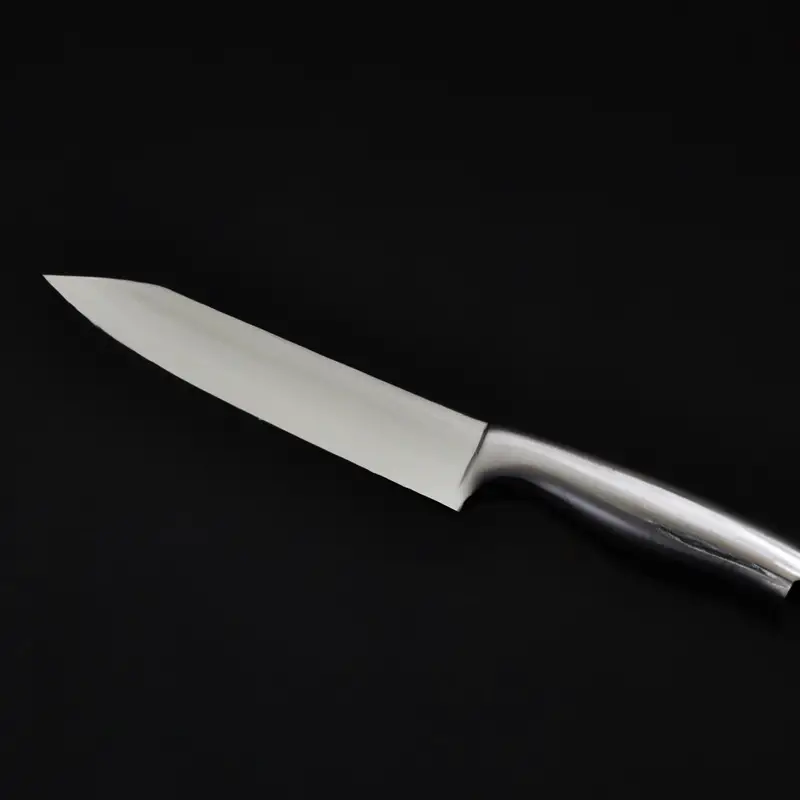
How to Care for Your Santoku Knife to Prolong its Lifetime
Proper care is essential for prolonging the life of your Santoku knife. Here are some tips to keep your knife in excellent condition:
- Keep it clean: After use, wash your knife with warm soapy water and dry it immediately with a towel.
- Store it carefully: Store your knife in a dry and safe place, away from moisture and direct sunlight. Avoid storing it with other kitchen utensils, which might damage the blade.
- Sharpen it frequently: Regular sharpening can help maintain the knife’s sharpness. Invest in a good quality sharpening stone or take it to a professional for sharpening.
- Avoid dishwasher: Although some Santoku knives are dishwasher safe, it’s better to avoid the dishwasher. The high heat and chemicals from dishwasher detergents can damage the blade and handle.
- Handle with care: Don’t use your Santoku knife to cut through hard materials like bones or frozen food. This can damage the blade.
By following these simple tips, you can keep your Santoku knife in excellent condition and prolong its life.
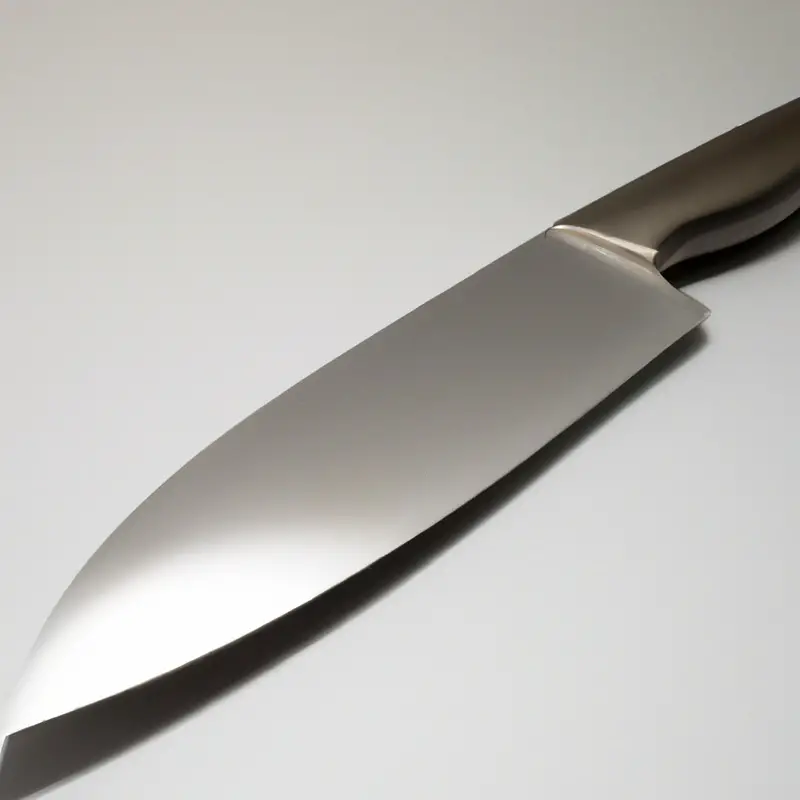
Santoku Knife vs Carving Knife: Comparing the Advantages and Disadvantages for Carving
Santoku Knives and Carving Knives serve different purposes, and choosing between the two depends on the specific task at hand. Carving knives are designed to slice cooked meats and poultry, while Santoku knives are more versatile and can be used for slicing, dicing, and chopping.
Advantages of Santoku Knives for carving include their sharper blade and versatility, which makes it easier to carve different kinds of meat.
They also have a shorter blade which makes them more maneuverable and comfortable to handle. On the other hand, Carving Knives are specially designed for slicing cooked meat, and their longer blade allows for more precise cuts.
They are also sturdier than Santoku knives and can handle tougher cuts of meat.
In summary, while a Santoku knife can be used for carving, it may not be the best option for precise slicing. It is important to consider the task at hand and choose the appropriate knife.
Final Verdict
A Santoku knife can be an excellent option for carving when used correctly. Its unique design and shape make it comfortable to handle and versatile enough to tackle a variety of cutting tasks.
However, careful consideration should be given to the edge profile, material, and size when choosing the best Santoku knife for carving.
Additionally, mastering the proper carving techniques and safety measures is essential for precision, efficiency, and avoiding common mistakes. By following the guidelines outlined in this article, you can confidently use a Santoku knife for carving and achieve exceptional results.
Remember to care for your knife properly to ensure its longevity.
To sum it up, a Santoku knife can be an excellent addition to any home cook’s arsenal, adding precision and versatility to their carving tasks.

